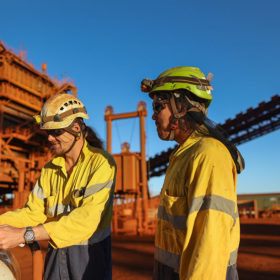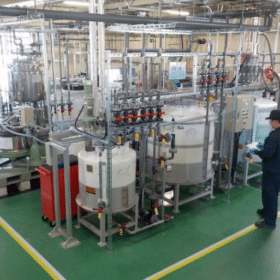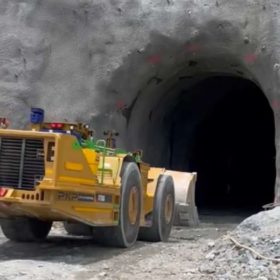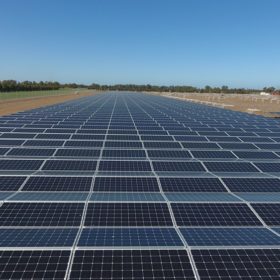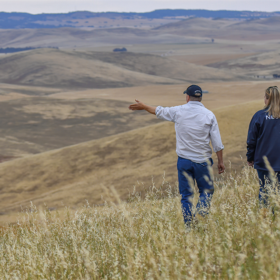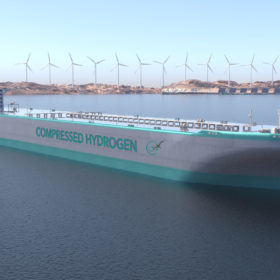Philippines’ first utility scale battery for grid stabilisation
The first 20MW/20MWh battery energy storage system in the 470MW/470MWh portfolio Fluence is deploying for Filipino conglomerate San Miguel Corp has started serving the island nation’s electricity network.
WA gold miner to install hybrid PV-gas system with hydrogen capacity
Gold developer Calidus Resources has become the latest miner to decarbonise its Western Australian operations by installing a 19 MW hybrid solar PV-gas power system which in future could be up to a quarter fuelled by hydrogen.
International partnership pushes Western Australian vanadium electrolyte plant toward reality
Western Australian vanadium explorer Technology Metals Australia and Japanese vanadium redox flow battery producer LE System have decided to tighten their relationship with an expanded Memorandum of Understanding that could see the construction of Australia’s first fully integrated vanadium electrolyte plant proximate to renewable energy hubs and major Australian population centres.
Genex heads underground on 250 MW/2 GWh pumped hydro project
Renewable energy developer Genex Power has announced that construction of a bold engineering project that will transform a retired gold mine site in north Queensland into a 250 MW/2 GWh pumped hydro energy storage facility is now ahead of schedule with underground works having commenced.
ICG snaps up majority stake in ~300 MW solar PV and storage portfolio
Australian investment manager Infrastructure Capital Group has stepped into the solar energy sector with the acquisition of a majority stake in a ~300 MW solar PV and energy storage portfolio from clean technology developer and investment firm Providence Asset Group.
Maoneng gets green light for $190 million Mornington Peninsula big battery
Australian renewable energy developer Maoneng’s 240 MWp/480 MWh big battery project proposed for Victoria’s Mornington Peninsula is a step closer to realisation after it secured development approval from the state government.
Studies show Dampier Bunbury Pipeline capable of 9% hydrogen blending, but underground storage less promising
Two Western Australian government funded studies into the transmission and storage of hydrogen have shown that the state’s main gas pipeline is, for large sections, ready for 9% hydrogen blending. However, in less promising news, another study found that the state’s underground storage capacity, including depleted oil and gas fields, are not proximate to the proposed 50GW Western Green Energy Hub or the 23GW Asian Renewable Energy Hub.
Neoen starts work on its ‘most ambitious project’
French renewables developer Neoen has started early works on its Goyder Renewables Zone, just north of Adelaide in South Australia. When completed, the project is likely to be the country’s largest wind, solar and battery storage project.
GEV launches development strategy for proposed 2.8 GW green hydrogen project
Western Australian renewables company Global Energy Ventures is steaming ahead with its plan to establish a massive 2.8 GW green hydrogen production and export facility on the Tiwi Islands off the coast of the Northern Territory, announcing it has already commenced the development program.
Improving compressed air energy storage efficiency via chemical reactions
Scientists in the United States have proposed to use a thermochemical energy storage (TCES) technique that stores energy in chemical bonds to recover the heat produced during air compression operations. According to them, this innovation may increase the round-trip efficiency of compressed air energy storage to 60%.

